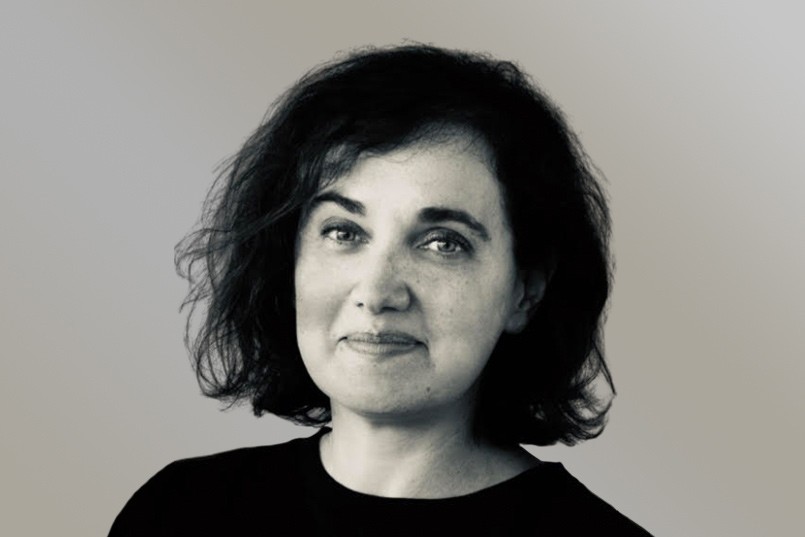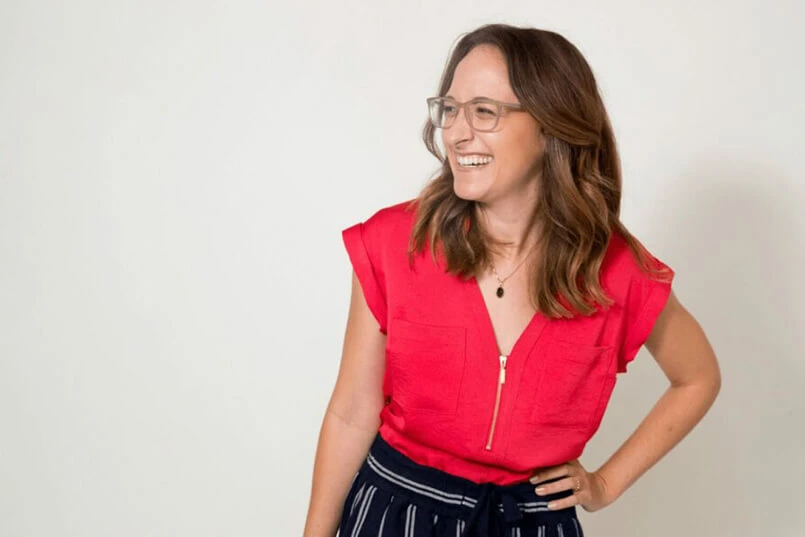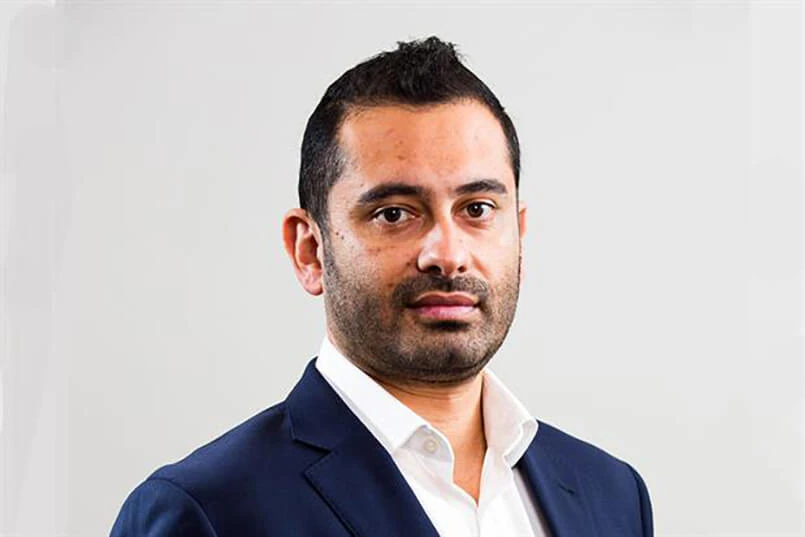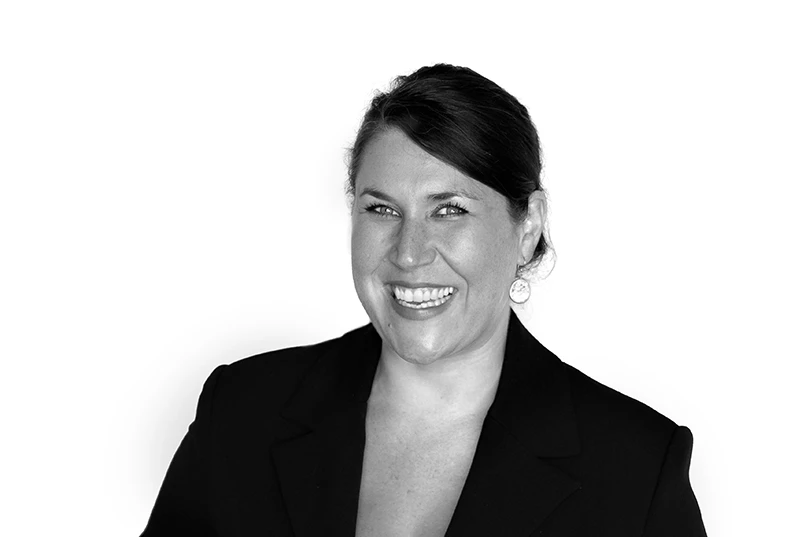Audrey Dauvet is a Legal Consultant at E&J Consulting NYC and the host of the podcast Brand & New for the International Trademark Association. She discusses her experience in developing and protecting innovative ideas and products and shares the challenges of protecting intellectual property globally. She also talks about the rise of the non-traditional trademarks such as sound, fragrance and colour and the need for careful consideration when investing in innovation.
You can listen to the podcast here:
Follow Managing Marketing on Soundcloud, TuneIn, Stitcher, Spotify and Apple Podcast.
Transcription:
Darren:
Welcome to Managing Marketing, a weekly podcast discussing issues of importance to the marketing and advertising world.
Today I’m in Soho, New York City talking with Audrey Dauvet who is the legal consultant at E&J Consulting. Welcome, Audrey.
Audrey:
Hi. Thank you for inviting me, Darren.
Darren:
The reason for catching up in New York is you’re based in Paris and I’m based in Sydney so you could argue New York is half way. Either that or it would be Dubai or somewhere. But your specialty is intellectual property law and how that’s applied to things like brands, innovation, and new product development isn’t it.
Audrey:
Absolutely. My background is legal. I studied law in France and spent most of my career as an intellectual property lawyer in private practice first in Paris and then after that for a big company in the beverage industry —Pernod Ricard.
I’m very proud of this experience. I was the group IP director for Pernod Ricard so we had a pretty big portfolio of IP bytes—more than 30,000 so a lot of work to do.
Darren:
It’s a global company with 1,000s and 1,000s of brands across the alcoholic beverages. But you’re also a bit of an entrepreneur and innovator. I noticed you’ve started a non-alcoholic beverage brand.
Audrey:
Absolutely, to complete my experience. I developed this company because there were some products missing on the market and my product is very specific.
Darren:
Non-alcoholic beverages have become really popular in the last year or so. This is an emerging trend. Heineken have produced a non-alcoholic beer and it’s jumping on that change of lifestyle where people want the flavour but don’t necessarily want the alcohol. Is that the category you’re in?
Audrey:
Absolutely. But I wanted to tick more boxes. In the non-alcoholic beverage sector there is a real issue: sugar. And it is a point that is more and more important for consumers so my product is very low in sugar. It has basically no alcohol and is more exciting than just water.
Darren:
Don’t give away the secret formula.
Audrey:
I won’t share the formula but it is an interesting product because it’s also focused on corporate responsibility and sustainability. For new brands today that is absolutely essential.
Darren:
I just want to check on your use of the term sustainability. There are parts of the world when you say sustainability they think you mean financial sustainability i.e. will be highly profitable and other parts of the world where you’re talking about environmental, social and ethical sustainability. Which one are you talking about?
Audrey:
I would say a mix. I’m not alone; we have a team working on this awesome project and what’s important for us is sustainability for the planet so environment definitely.
Darren:
In some places in the world sustainability means making sustainable profits, in other places it means environmental sustainability and in others it means to be a responsible corporate. Which one is it for you?
Audrey:
I think it’s a mix of those. A company that is sustainable should make profit otherwise there is no existence for the company so profit is absolutely essential. At the same time you need to take into account people and the planet.
It’s a mix of actions that we put in place that will provide something positive in all these areas. We cannot do everything but with our product, identity and values we know that we can have an impact on certain issues.
Darren:
Back in the 1970s or 80s there was a thing called the triple bottom line and that was people, profit, and also then planet. Do you think we’re returning to that?
Audrey:
Absolutely. Just look at what’s happening regarding climate change. It has a new image today because it has adapted to our times but it’s more important than ever.
Darren:
You also do a podcast yourself so please give me some feedback and tips because yours is called Brand & New and it’s by the International Trademark Association. Obviously, you’re doing a podcast in a category that’s very close to your heart.
Audrey:
Absolutely. You need to and you know that, Darren. You need to love the topic you cover when you do a podcast. And I had the chance to do that with the International Trademark Association that produces the podcast; I’m the host.
Basically it’s focused on IP and brands but in a general context that could be social, economic, political, cultural, so we talk about different topics in different regions of the world. For the 1st season (just ended recently) we had a focus on technologies so we talked a lot about IP and artificial intelligence and the internet of things.
What are the interactions between IP and all these related areas?
Darren:
It’s changing the landscape. Just for clarity when we talk about intellectual property my understanding is that’s copyright, trademarks and patents. Is that a reasonable breadth of IP or is there more I should be thinking about?
Audrey:
You can think about designs, databases. You mentioned the main pillars but behind them there are other rights that also have a reality for a lot of people depending on your industry, where you create or develop new things.
Darren:
When we talk about IP I get a lot of people saying that the laws are very different from country to country. Is that true or are there international agreements around things like intellectual property and copyright or does it vary a lot from market to market?
Audrey:
It varies a lot from market to market. There is a wish to harmonise certain areas because it provides more security to rights holders. That’s necessary to find some common ground. Now for example you have in the European Union this trademark that covers all the European Union countries.
You also have a trademark that’s international that is protected in many countries in the world. An example of a global regulation is the Madrid Protocol, which is very important when you talk about brands.
Again it’s both. You have local rights that have to be managed with international global rights.
Darren:
A lot of people complain that by the time you get protection in every single market you need; it’s incredibly expensive so it locks out a lot of innovators and also it’s expensive to enforce isn’t it?
Audrey:
Yeah. I would say the cost really depends on the rights you want to protect. If you talk about a patent it’s true it has a cost because it’s not only about the right but having done all the preparatory work, the search, drafting the patent itself etc. A trademark is much cheaper. But again it depends what’s relevant for you, your business or company.
Darren:
So it depends on the market you’re in and the kind of protection you have?
Audrey:
Yes.
Darren:
But even enforcing it is incredibly expensive. I was quoted 60 to 100,000 US to enforce even a copyright dispute.
Audrey:
Yeah. Again you have some disparities between the markets you want to cover or where you need enforcement action. If you compare a European market, France or Italy or Spain and you compare it to the US. Definitely the cost won’t be the same if you want to enforce it.
If you want to initiate an infringement action against another entity you need to define what is the most relevant for you, where you have the most chance to succeed, where it makes sense for you to bring an action before the courts. What you say is true but it depends on the markets.
Darren:
There are some markets like the EU where they’ve harmonised the rules around registering and protecting intellectual property. But technology is also making it incredibly difficult. The number of times we’ve been on the periphery of disputes over code for instance and there are only so many different ways you can code something so how can people get protection around that type of information?
Audrey:
That’s a very good question and was the topic of the very first season of my podcast, Brand & New. Think about artificial intelligence. Can you or how do you protect a creation made by a machine? Who is the author?
And the answers depending on the countries are not the same. When you talk to certain practitioners in Asia, Europe or America you will have diverse answers to that depending on the advancement.
I had a very interesting discussion with an IP lawyer in Japan who explained what was possible in Japan. I had the same discussion with a lawyer in India and the answers were totally different.
Darren:
It would be quite dangerous to give the rights to the person who created the programme or AI because some religions could argue their god creates human beings so god creates all intellectual property.
Audrey:
May I ask you a question then? Who is the author, the machine?
Darren:
Ultimately the machine created the actual piece of intellectual property so yes. And then if the machine is owned by someone then ipso facto they own the rights to it.
Audrey:
There is a lot of debate around that.
Darren:
The person who programmed the machines owns the programme. Does that mean they own the outputs to the programme? Not necessarily because there are a lot of software systems where the programmer or owner owns the software but the customer, their data that goes into it, they own the outputs to that because it’s their data.
This is where we get into perhaps having shared ownership rights because some people own certain levels and other people own other bits and they should be able to have protection for their component parts.
Audrey:
Basically it’s about security. All these regulations and rules have been made for humans not for machines. So it’s about what will be the future of certain rules and how they will need to adjust to our times and technologies.
Darren:
When someone’s employed, in their employment contract everything they create is owned by their employer so it is possible to have automatic assignment of your intellectual property to someone. We’ve seen that very day with employment contracts. And in some countries it’s enshrined; you don’t even need to state it implicitly in the contract because it is just the rule of the market.
Perhaps that’s the direction we can take for machines; whoever owns the machine owns the copyright and intellectual property.
Audrey:
We’ll see how it evolves. I’ve not seen any consensus on this topic during my discussions with the experts and visionaries that think about what will be next in the IP world.
Darren:
And at the next level; what happens when those machines have self-consciousness, which is a long way away. We talk about artificial intelligence but really we’re talking about it running in the domain of an algorithm and machine learning rather than true sentient machine awareness of itself, which according to my reading is still a long way off.
Audrey:
Yes. We’ll see when we start talking about machine emotions.
Darren:
The technology of the internet has put a lot of stress on the laws of intellectual property. We’ve seen people taking trademarks and changing them for satirical purposes or political statements. And a number of times the traditional legal process to enforce the rights of the owner has largely failed because it can come down off the internet here only to pop up somewhere else and you have to go through the whole legal process again.
Audrey:
You’re absolutely right; it’s very tough to defend your rights in the era of the internet.
Darren:
Do you need to in some ways, because part of it should be around whether it’s actually damaging the value of your intellectual property. There’s a beer in Australia called Victoria Bitter and tattoo artists go and get the rights to put the tattoo on their customers. And sadly, the brand owner gets a lot of requests from undertakers because the deceased wants the logo on their coffin.
It’s called Victoria bitter—this is a lifelong obsession for some beer drinkers in Australia but they at least go and get the copyrights to put that brand on their tombstone.
Audrey:
It’s also the call of the brand owner to decide what’s appropriate or acceptable and how to react to that. Some will react because it could really infringe their rights and they may initiate court action. In other instances they might consider they can react positively because it also brings some publicity.
You have a wide range of illustrations of trade mark uses by 3rd parties that can lead to very different reactions from owners.
Darren:
And on the internet people are more likely to get picked up. Young musicians are often getting picked up for lifting pieces of music from existing tracks. Artists, filmmakers are getting picked up for using trademarked designs as props for instance inside films. It must be a bit of a minefield isn’t it from the legal point of view?
Audrey:
Yeah. You have a lot of contracts. That’s the key to many problems, to authorise the use or reproduction or representation of the rights of others. If you want to use the rights of others the basic thing to do is ensure you can do it with the proper authorisation.
It’s true, the internet is fast and you have so much content that sometimes you feel you don’t need to obtain authorisation but if you meet an IP practitioner and you want to use the rights of others he or she will advise you to do that properly.
Darren:
So what about innovation? Part of innovation is getting inspiration from what exists and finding new ways or combinations of putting that together. What’s the role of intellectual property in defining or protecting innovation? In innovation you could be at risk of being accused of borrowing or being inspired by someone else’s IP.
Audrey:
It’s deeply linked. Why would you innovate if your innovations were not protected properly?
Darren:
Absolutely; it’s a big cost to do innovation.
Audrey:
Exactly; it’s intellectual effort, human effort, it can require resources, money, strong investments so of course you need to protect that. IP and innovation are definitely linked and interconnected. One doesn’t go without the other. I would even enlarge the concept of innovation linked to IP.
My first podcast season was really about new methodologies but I thought about what would make sense for our listeners in the future and it was not only about technologies; it was also about change and the links between intellectual property and how our society and economy change.
It can be the climate change, legalisation of cannabis; what’s the impact of this on intellectual property and vice versa.
Darren:
In fact we’ve seen a huge rise not just in cannabis but CBD oil and the hemp industry and the number of products. There are existing products and if you add in CBD oil as an innovation, does that make it a new product? Or is the underlying formulation part of the product in the 1st place?
So, these are all challenges for legal teams around the world trying to work out is it a new product, enhanced product therefore IP exists elsewhere. Are these the sorts of issues you find yourself dealing with? Was it an issue with your non-alcoholic beverage?
Audrey:
Actually no because I don’t have CBD or THC.
Darren:
From the point of view of how much is truly new and how much comes from existing intellectual property?
Audrey:
For me it was more focused on the brand.
Darren:
By the way you could think about CBD in your products.
Audrey:
Next discussion maybe.
Darren:
Sorry, it was more about the formula?
Audrey:
Yes, for me it was focus on the brand and the building of the brand and not so much on the formula which is a secret recipe. The protection of formulas is not so easy, depending on the markets.
For the brand it was absolutely key for us to have a distinctive sign that would be recognised by the consumers immediately. That’s the basic definition.
Darren:
One of the other areas of interest for me is that traditionally people think about brands as logos when they get into a legal domain. When they’re thinking about protecting their brand they think about the logo typeface or packaging design and there have been some interesting cases recently.
I think Cadbury and Mondelez tried to enforce the purple colour of their chocolate as part of that. Do you see that as becoming an increased area of protection or do you think we should be looking at the very distinctive things rather than the peripheral. I see the purple colour as a very difficult argument to make.
Audrey:
It’s a very interesting question; one of the hottest in the intellectual property world. At the moment words are a limited resource. Even logos can be seen as a limited resource. You have millions and millions of names, designs and logos. These new areas of protection (colour but also flavours, sounds, textures) can now be protected in a pretty important number of markets.
Darren:
And sound particularly. We’re starting to hear with voice search as a technology, brands are looking to protect the audio that’s associated with their brands. Adeedas or Adidas, which is the one you need to protect?
Audrey:
Absolutely.
Darren:
It’s fascinating how technology is making the field more and more difficult. But the way law captures what is intellectual property is with words, especially trademarks because the trademark will describe the logo type, the packaging but it won’t actually use visual reference because it’s difficult to search.
Audrey:
Absolutely. And it’s one of the new challenges for practitioners to see how we can protect the wider range of brands. I think it will grow bigger and bigger because of the development of these technologies.
Darren:
Audio is important because we’re also starting to see brands develop signature sounds as a mnemonic to remind people of the brands. You also mentioned flavours. So you can also trademark or protect fragrances and taste?
Audrey:
Again, if it’s distinctive and follows all the requirements of the laws why not?
Darren:
I always thought verbal descriptions of wine for instance, ‘peppery with a great currant after…’ was really just people using a limited vocabulary to describe something that’s often indescribable? I’m not sure about the chocolatiness or pepperiness or the fruity crisp aftertaste of my red wine. How does the law actually capture that?
Isn’t smell and taste incredibly personal and subjective; the way you interpret it?
Audrey:
You have some objective criteria for definition. And you have some guidelines. I invite you and your listeners to read what the lawyer, Irene Caboli wrote about the topic of what we call the non-traditional trademarks. It’s the bible in this area and she is one of my guests in the next season of my podcast.
She covers everything, all these areas and she explains how to protect a flavour properly. It’s pretty technical; it’s not simple but you have some objective criteria.
Darren:
Does it include scientific analysis of ingredients? That would certainly be an empirical measure; if something was sweeter you would expect to find more sugars, or more sour, the esters in it would all be part of it wouldn’t it?
Audrey:
Yes.
Darren:
Then it comes back to the formulation that is being protected that’s causing the sensory impact?
Audrey:
I would say no, it’s different. In the trademarks you will look for the distinctiveness whereas for the formulation, if you want to protect a patent you will have to follow other criteria. You are in different territories. It’s interesting because it’s (non-traditional trademarks) a world under construction at the moment.
You still have some jurisdictions that do not accept them so it’s a work in progress. The debate over colour has been going for some time.
Darren:
Yes, it was interesting because it got different results in different jurisdictions. In some markets the courts found it was protectable and in others it wasn’t.
Audrey:
Yes.
Darren:
Part of it seemed to come down to if the judge (for me one of the weaknesses of the law) thought the similarity or the value of using that particular non-traditional trademark would have given the person accused of infringing a financial benefit rather than being a more objective decision around is it similar and does it have value.
Audrey:
You raise an important point. You have different legal systems so the latitude a judge will have in the common law countries (for instance the U.S or U.K.) may be completely different from a civil law country like France or Latin American jurisdictions. Again, you will have a different approach from country to country.
Darren:
O.K. I’ve just noticed we’re running out of time. It’s been a fascinating conversation. I do have a question for you Audrey before we finish up. Of all of the trademarks and brands and the amount of money spent protecting them, do you think the commercial factors still stack up to protect your intellectual property?
Ideal for marketers, advertisers, media and commercial communications professionals, Managing Marketing is a podcast hosted by Darren Woolley and special guests. Find all the episodes here




